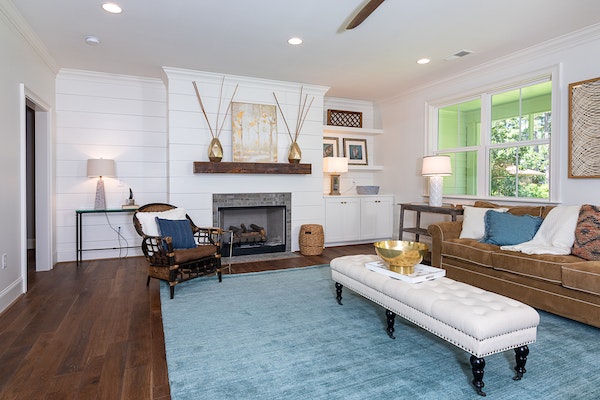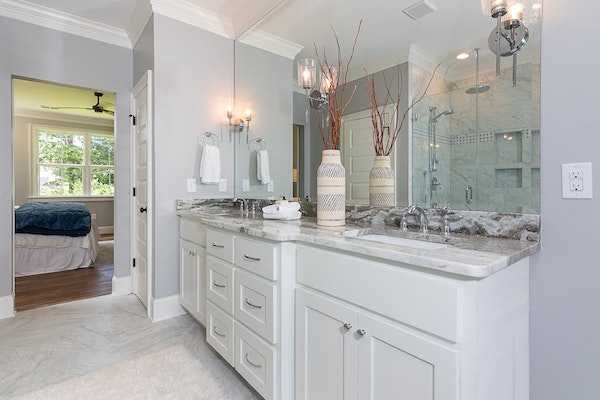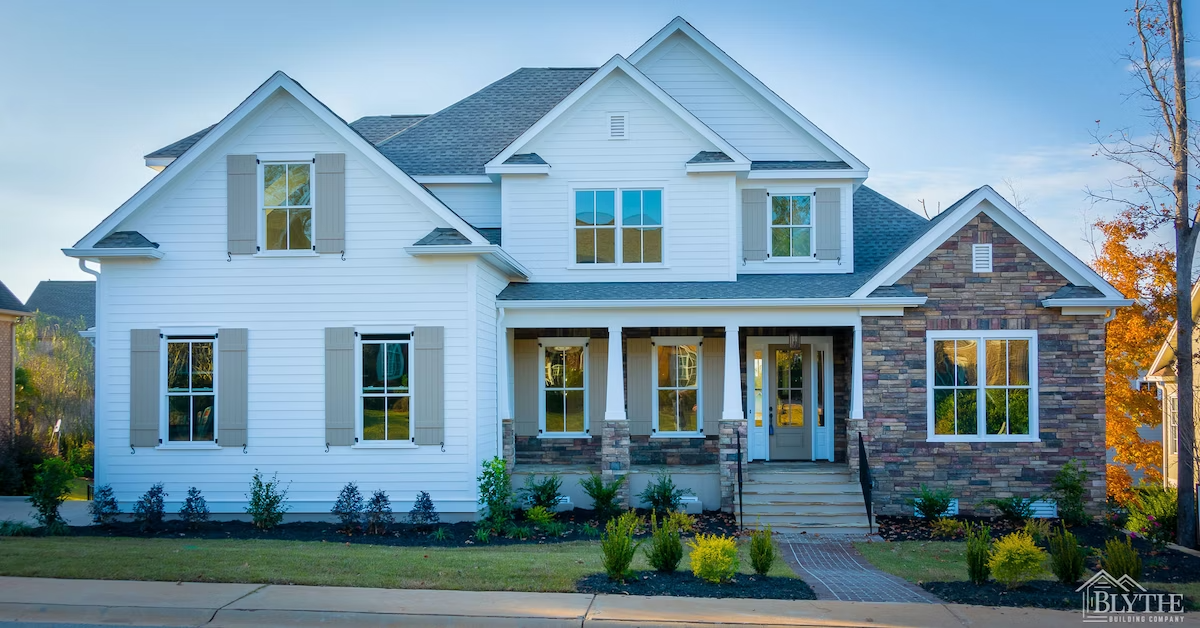We would all love for the process of building a new house to be practically instantaneous, but the reality is that new home construction timelines take a number of months.
When you are planning to build a home, a bit of patience is necessary. But the reward of having exactly what you want at the end of the process makes it all worthwhile.
You may be wondering, “About how long does it take to build a new house?”
In general, according to the US Census Bureau in 2018, the average time it takes to build a house for most production houses in the US was about 4-6 months once building got started. Custom homes, on average, took about 10-16 months.
This doesn’t include the time required to have an architect design your home. And it doesn’t include time spent finding a lot or working out the details of the contract before building.
This timeline also doesn’t include supply chain issues because those weren’t really as big of a concern before 2020.
If you buy a new house that was “built for sale,” or a spec house, you may not have long to wait at all. But you also won’t have much input into the finishes and materials used. It will be almost finished by the time you see it.
Of course, many factors that can impact the time it takes to build a particular single-family home.
To get the most accurate estimate possible, please speak with your particular builder. If we are your builder, we will be glad to give an estimate for your home’s build time as we walk through the building process with you.

Factors affecting your home building timeline
Whether you have your lot already or not.
If you want to have a custom home built but need to find a lot, this may cause a lag in your build time. Some builders will expect you to build on your land and own a lot before they can start on your project. Other builders may have lots you can buy directly from them.
The size of the house.
Your building-a-house-timeline may be a few months longer for a bigger home. It makes sense that building a 1500 square foot home would generally be a faster process than building a 7000 square foot home.
Your home builder should be able to give you realistic estimations about how long your particular project should take. They can also tell you how the size of your project may impact the estimated time to completion. So it’s a good idea to speak with your builder about any questions you may have.
Permit turn-over time and inspection request wait time.
Building a dream home often involves numerous building permits. Some towns and counties processing requests quickly. Others may have a longer turn-over time. The more complex a project is, the longer it may take for the permitting to be approved, as well.
Inspections must be done after each phase of building to be sure the home meets current local building codes. Homebuilders request inspections in advance. Each permitting office has its own process and expected turn-around time.
Expect that the wait time may be longer in busy seasons or if a project is particularly complicated.
Financing issues.
If you hit any snags with getting a construction loan, that could create a setback for your home building timeline. Thankfully, you can look into options ahead of time so you won’t have any surprises. As much as possible, consider speaking with your bank or lender in advance.
The weather and location of the home build.
Some things homebuilders can work on even in extreme heat, rain, ice, or cold. But many aspects of construction need specific weather conditions. If conditions aren’t right, the integrity and quality of the finished home could be compromised.
There are variations in build times in different areas of the US, often due to climate. If you are building in the South, you can expect your home to be finished several months sooner than if you are building in the Northeast. Ice and snow tend to delay construction.
Other differences in building times are related to rural vs. urban areas. If you build out in the country, expect about two additional months for your house to be finished than if you are building in a city area. This can simply due to the supply of available construction workers and equipment in the area or the level of demand for services.
If you want to build your house in an extremely remote location that is difficult to access this could also increase the time it takes to build your home. For example, if you choose a private island or the top of a mountain without major roadways, your build will probably take longer.
During busy times like summer or after a major hurricane, flood, or other disasters in an area, it may be more difficult to find available workers. If there is a shortage of construction workers in an area during your house build, this can affect some homebuilders’ staffing abilities.

The complexity of the home build.
Simple house plans tend to move more quickly through the construction timeline. With a production home, for example, builders use the same floor plans, products, and processes over and over again.
This cookie-cutter approach cuts down on costs and on time for building a house. It also cuts down on a buyer’s options and customization.
The particular interior finishes/exterior finishes you choose may also play a factor in how long the build takes. Some finishes and materials take longer to receive when ordered.
Adding a coat of paint or two may not take more than a few days to finish. But some materials take longer to install or there may be curing times to take into consideration. And, if you want something that happens to be on backorder, there could be an extra delay, as well.
A custom home builder may take a bit longer to finish your project because the home design is highly specialized and personalized. Complicated home plans often take longer to build because these homes are not being produced en masse as cookie cutters.
For example, if you want an extremely specialized home for multi-generational living that is a bit larger and has two kitchens, more bathrooms, and an additional laundry room, it may take a bit longer.
Or if you want to build a home with extremely complex ceiling designs, intricate wood floor patterns, or detailed customized murals, expect it to take longer.
The payoff is that you will get to enjoy your exact dream home in the end.
The amount of work involved in preparing the lot.
Problems could potentially arise when crews are clearing the lot. Soil tests must meet certain requirements. Some areas have laws about tree removal for trees above a specific diameter that could be an issue.
Excavation could expose unexpected springs or other land-form features that may cause plans to have to change.
If you are having a basement dug, this may add to the time involved in site preparation. The depth of bedrock, drainage issues after the rough grading, and whether you live in an area that experiences significant winter freezing in the soil may impact the amount of time required to prepare your lot, as well.
The contractor’s timeline process and practices.
It is wise to choose a contractor who seeks to set firm deadlines and who strives to keep each milestone of the project on schedule with the building process. Issues will arise, of course, but if you have a home builder that tries to stick with the set schedule, you will be able to avoid any unnecessary delays.
Verify a custom builder’s policy on handling deadlines and delays before hiring them. Be sure you and the builder are on the same page.

The number of decisions left for a customer to make after building starts.
If you can make most of your decisions about home design, exterior walls, finishes, hardware, colors, and appliances before you begin building a custom home, this will help keep the timeline moving along with minimal delays. It is probably impossible to make every decision in advance.
But it’s important to realize that the more changes that have to be made after building begins, the more delays you can expect. Especially if the new choices require something to be torn down and redone, an extra inspection, a change in materials, or extra time for delivery of a special order.
Some factors in the time involved in building a home or custom home are out of a builder’s or buyer’s control but others can be managed wisely. This will help keep your wait to a minimum as you prepare to move into your amazing new dream home.
Supply chain issues.
Unfortunately, there have been some significant disruptions to the building supply chain in 2021 and 2022. Sometimes materials are quickly available. Other times there can be a longer wait than what any of us would like. The best way to be prepared is to talk candidly with your builder about what to expect and how to best hedge against any issues on your project.
Your builder can help you determine what materials may be likely to be on backorder and which ones might be more readily available.
Related
What Are the Hassles of Home Building?
How Would You Build Your Dream Home?
Top Six Reasons to Choose a Custom Home Builder







